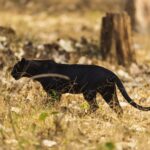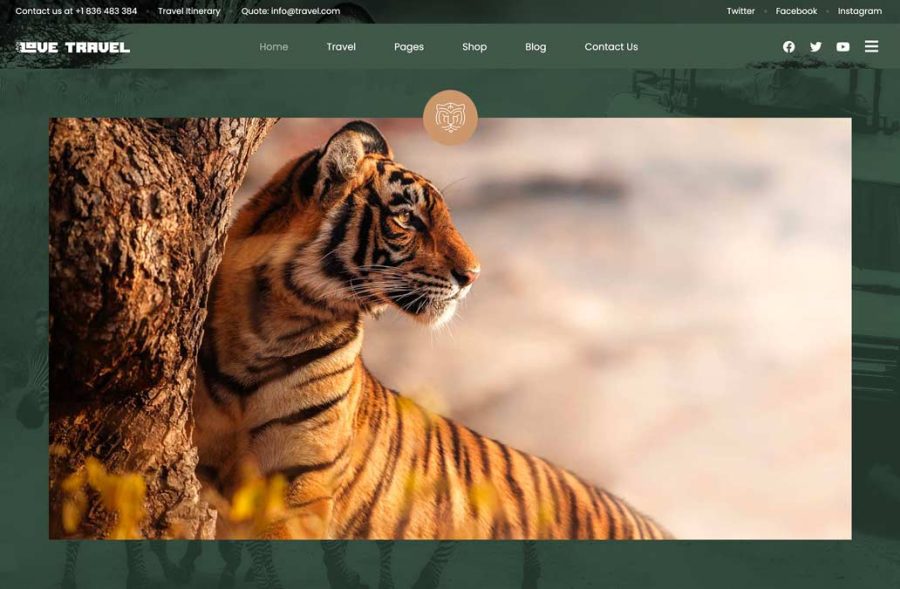Welcome to our guide on the bears of India! India is home to a diverse and fascinating range of bear species, each with its own unique characteristics and habitats. In this article, we will explore the different types of bears found in India, the challenges they face, and the conservation efforts being made to protect them.
Bears have long captivated the imagination of people around the world with their strength, beauty, and often-elusive nature. In India, these magnificent creatures can be found in various regions, from the dense forests of the Himalayas to the tropical lowland forests of the subcontinent.
One of the most iconic bear species in India is the Sloth Bear, also known as the Indian bear. This myrmecophagous species has a unique diet that includes ants, termites, fruits, and honeycombs. However, it faces challenges such as habitat loss and degradation, which have led to its vulnerable status on the IUCN Red List.
Jump To
ToggleKey Takeaways:
- India is home to a diverse range of bear species, including the Sloth bear and Asiatic black bear.
- Sloth bears are myrmecophagous, meaning they feed primarily on ants and termites.
- Habitat loss and degradation pose significant threats to Indian bears.
- Conservation efforts are underway to protect Indian bears and their habitats.
- Exploring India’s national parks offers opportunities to witness the incredible wildlife diversity, including bears.
The Sloth Bear: A Myrmecophagous Species
The sloth bear, also known as the Indian bear, is a fascinating species native to the Indian subcontinent. The scientific name for the sloth bear is Melursus ursinus. One of the distinguishing features of this bear is its myrmecophagous nature, meaning it predominantly feeds on ants and termites.
This incredible bear species has gained attention due to its vulnerable status on the IUCN Red List, primarily attributed to habitat loss and degradation. As human activities continue to encroach upon their natural habitats, the sloth bear population is facing significant challenges.
“The sloth bear is a unique myrmecophagous species, consuming insects as a primary food source.”
Despite their vulnerability, sloth bears of India have adapted well to their environment and developed specific characteristics that aid in their survival. Let’s explore some of these characteristics:
| Characteristics of the Sloth Bear | Description |
|---|---|
| Size | Sloth bears are medium-sized bears, with males typically weighing between 200 and 300 lbs (90 to 140 kg), while females weigh slightly less. |
| Fur | They have long, shaggy fur that ranges in color from black to dark brown, providing insulation against varying weather conditions. |
| Lower Lip | One of the most distinctive features of sloth bears is their long lower lip, which aids in sucking up insects from mounds and helps prevent bites. |
| Claws | Sloth bears of India possess sickle-shaped claws that are adapted for digging into termite mounds and ant hills, allowing them to access their preferred food. |
The sloth bear’s unique characteristics and myrmecophagous behavior set it apart from other bear species in India. The next section will delve into the taxonomy and range of the sloth bear.
Taxonomy and Range of the Sloth Bear
The sloth bear, also known as the Indian bear, belongs to the genus Melursus. It is the only species within this genus, making it unique among bears of India. Throughout history, the sloth bear has been classified by different names, including Bradypus ursinus and Melursus lybius. However, its current scientific name is Melursus ursinus.
The sloth bear has a wide range in the Indian subcontinent, including parts of India, Nepal, Sri Lanka, and Bangladesh. Its presence is predominantly found in regions with forest cover and low hills along the outer range of the Himalayas. These areas provide the sloth bear with suitable habitats and resources for survival.
To have a clearer understanding of the sloth bear’s taxonomy and range, take a look at the table below:
| Scientific Classification | Common Names | Range |
|---|---|---|
| Melursus ursinus | Sloth Bear, Indian Bear | India, Nepal, Sri Lanka, Bangladesh |
Characteristics of the Sloth Bear
Sloth bears, scientifically known as Melursus ursinus, are medium-sized bears with unique features and adaptations that set them apart from other bear species. Let’s take a closer look at the distinctive characteristics of sloth bears:
- Size: Sloth bears are medium-sized bears, with adult males weighing between 220 to 440 pounds (100 to 200 kilograms) and measuring about 6 to 7 feet (1.8 to 2.1 meters) in length. Adult females are slightly smaller, weighing around 140 to 300 pounds (64 to 136 kilograms).
- Fur: These bears of India have long, shaggy fur that varies in color from dark brown to black. The fur helps protect them from insect bites and provides camouflage in their natural habitat.
- Long Lower Lip: One of the most distinctive features of the sloth bear is its long and flexible lower lip. This unique adaptation allows them to suck up termites and ants from mounds without getting bitten.
- Sickle-Shaped Claws: Sloth bears have long, curved claws that resemble sickles. They use these powerful claws for digging into termite mounds and ripping them apart to access their insect prey.
Sloth bears of India also have long hair on their ears, giving them a distinctive look. This combination of physical traits and adaptations enables sloth bears to thrive in their natural habitat and survive on their specialized diet of termites, ants, fruits, and other vegetation.
To better visualize the characteristics of the sloth bear, refer to the table below:
| Characteristics | Description |
|---|---|
| Sloth Bear Size | Medium-sized bears of India with males weighing 220-440 pounds and females weighing 140-300 pounds. |
| Sloth Bear Fur | Long, shaggy fur ranging from dark brown to black. |
| Long Lower Lip | Distinctive long and flexible lower lip, aiding in the consumption of termites and ants without getting bitten. |
| Sickle-Shaped Claws | Powerful claws with a curved shape, used for digging and tearing apart termite mounds. |
These characteristics make the sloth bear a fascinating and unique species in the bear family. Next, we will explore the habitat and feeding habits of these remarkable bears.

Habitat and Feeding Habits of the Sloth Bears of India
The sloth bear, with its unique characteristics and behaviors, thrives in specific habitats and has adapted to a specialized diet. Let’s delve into the sloth bear’s habitat preferences and its insectivorous feeding habits.
Sloth Bear Habitat
Sloth bears primarily inhabit tropical lowland forests and tall grasslands across India, Nepal, Bhutan, Sri Lanka, and Bangladesh. These regions provide the ideal environment for their survival, offering both dense vegetation cover and an abundant supply of the bear’s preferred food sources.
| Habitat Features | Description |
|---|---|
| Tropical Lowland Forests | These forests, known for their lush vegetation and diverse wildlife, offer sloth bears of India ample resources for foraging and shelter. |
| Tall Grasslands | The tall grasslands provide dense cover that allows sloth bears to move silently and unnoticed while searching for food, as well as providing protection from potential threats. |
Sloth Bears of India Feeding Habits
The sloth bear has earned its name due to its arboreal-like behavior and insectivorous diet. While they primarily feed on insects, they also consume a variety of other food sources.
“Sloth bears of India possess specialized adaptations that aid them in their insectivorous habits.” – Wildlife biologist, Dr. Maya Sharma
The sloth bear’s diet consists of a wide range of insects, including ants, termites, and beetles. They use their strong claws to dig into termite mounds and anthills, extracting their protein-rich prey.
Additionally, sloth bears incorporate fruits, flowers, and honeycombs into their diet, providing them with supplementary nutrients and energy sources. This versatile feeding behavior allows them to adapt to the availability of different food resources throughout their habitat.
Observing the sloth bear in its natural habitat, one can witness its agile climbing skills, specialized snout for extracting insects, and its ability to swoop up fruits from trees. These adaptations highlight the unique lifestyle of the sloth bear in its pursuit of sustenance.
The successful adaptation of sloth bears of India to their preferred habitats and their insectivorous habits contribute to their survival and their crucial role in maintaining ecological balance within their ecosystems.
Reproduction and Behavior of the Sloth Bear
The sloth bear has fascinating reproductive and behavioral traits. Female sloth bears have a gestation period of approximately seven months before giving birth to two cubs, which they nurture and protect fiercely. These cubs stay with their mother for at least two years, learning essential skills and gaining independence gradually.
Despite their name, sloth bears of India are anything but slothful in defending their territories and young. They exhibit remarkable territorial behavior, marking their boundaries with distinctive scrapes, vocalizations, and scent markings. This territoriality is crucial for the survival of their young and maintaining access to valuable resources.
When threatened, sloth bears of India can surprisingly display remarkable speed and aggression. Their maternal instinct and innate drive to protect their cubs make them formidable opponents, capable of defending themselves and their young with great ferocity.
Sloth Bear Reproduction at a Glance:
- Gestation period: Approximately seven months
- Number of cubs per litter: Usually two
- Maternal care: Cubs stay with their mother for at least two years
Notable Sloth Bear Behaviors:
- Territoriality: Sloth bears fiercely defend their territories
- Defense of young: Maternal instinct drives them to protect their cubs
- Aggression when threatened: Surprisingly agile and powerful when facing danger
“Sloth bears are fascinating creatures, displaying remarkable defensive behaviors when it comes to their young and territories.”
Other Bear Species in India
Besides the sloth bear, India is also home to other bear species that contribute to the diverse bear population in the country.
The Asiatic black bear (Ursus thibetanus) is found in the Himalayan foothills of India. Also known as the Himalayan bear, it is recognizable for its black fur with a distinctive white patch on its chest.
The Himalayan brown bear (Ursus arctos isabellinus) inhabits remote regions in Ladakh, India. This bear species is known for its thick fur and robust build, adapted for survival in cold mountainous terrains.
| Bear Species | Scientific Name | Range |
|---|---|---|
| Asiatic black bear | Ursus thibetanus | Himalayan foothills |
| Himalayan brown bear | Ursus arctos isabellinus | Ladakh, India |
These bear species are vital components of the Indian bear population, representing the rich biodiversity of the subcontinent.

Conservation status of the Asiatic black bear and Himalayan brown bear
Both the Asiatic black bear and Himalayan brown bear are listed as vulnerable on the IUCN Red List due to habitat loss and hunting pressure. Conservation efforts are essential to protect these bear species and preserve their natural habitats.
Conservation Efforts for Indian Bears
Bears of India, including sloth bears, face a variety of threats that put their survival at risk. Poaching, habitat loss, and human-wildlife conflicts are some of the challenges these majestic creatures encounter in the wild.
In response to these threats, dedicated conservation efforts are being undertaken to protect Indian bears and their habitats. Stricter anti-poaching laws are being enforced to combat illegal hunting and trade of bear parts, ensuring the safety and well-being of these vulnerable species.
Habitat restoration projects play a crucial role in preserving Indian bear populations. By rehabilitating degraded areas and creating interconnected habitats, these projects aim to provide bears with suitable environments to thrive and maintain healthy populations.
Community-driven awareness campaigns are also essential in raising public consciousness about the importance of bear conservation. By educating local communities and promoting coexistence between humans and bears, these campaigns help reduce conflicts and foster a harmonious relationship between people and wildlife.
“Conserving Indian bears is not just about protecting a single species; it is about safeguarding the biodiversity of the entire ecosystem.”
With concerted efforts from wildlife conservation organisations, government agencies, and local communities, the future of Indian bears can be secured. Through collaborative research, monitoring, and conservation initiatives, we can ensure that generations to come will have the opportunity to marvel at the beauty and magnificence of these incredible creatures.
Conservation Measures for Indian Bears:
- Stricter anti-poaching laws
- Habitat restoration projects
- Community-driven awareness campaigns
- Collaborative research and monitoring
Where can you see Bears in India?
India is not only renowned for its diverse bear species but also boasts a captivating range of wildlife throughout the country. From majestic Bengal tigers to the elusive one-horned rhinos, India offers a captivating wildlife experience like no other. With its varied ecosystems and vast landscapes, it is home to a wide array of rare and endangered animals, making it a paradise for wildlife enthusiasts.
Here’s where you can spot bears of India.
Daroji Sloth Bear Sanctuary: India’s Exclusive Bear Haven
If sloth bears are on your wildlife bucket list, Daroji Sloth Bear Sanctuary in Karnataka is the place to be. Established in 1994, this sanctuary spans over 82 square kilometers and is dedicated solely to the conservation of sloth bears. The rocky terrain, interspersed with scrub forests, provides an ideal habitat for these termite-loving mammals. With a population exceeding 120 sloth bears, sightings are frequent, especially around the strategically placed feeding areas.
Beyond bears, Daroji is a haven for birdwatchers and wildlife enthusiasts. Peacocks, jackals, and wild boars are common sights. For the best experience, visit during the early morning or late evening hours when the bears are most active. The sanctuary also features watchtowers, offering excellent vantage points for observing these fascinating creatures in their natural habitat.
Tadoba Andhari Tiger Reserve: Where Tigers and Bears Cross Paths
Located in Maharashtra, Tadoba Andhari Tiger Reserve is renowned for its tiger population. However, it’s also a significant habitat for sloth bears. The reserve’s dense forests and hilly terrains create a perfect environment for these nocturnal animals.
In September 2024, visitors witnessed a dramatic encounter between a sloth bear and a tiger. A mother bear fiercely protected her cub from a dominant male tiger, showcasing the bear’s bravery and maternal instincts. This rare event was captured on video and shared widely, highlighting the unpredictable and thrilling nature of wildlife experiences in Tadoba.
Kanha National Park: Bear Territory in the Heart of India
Madhya Pradesh’s Kanha National Park is famed for its tiger sightings, but it’s also a prime location for observing sloth bears. The park’s dense sal forests and grassy meadows provide an ideal habitat for these shaggy-coated creatures. Early morning safaris increase the chances of spotting bears foraging for termites or fruits.
Ranthambore National Park: Bears Amidst Ancient Ruins
While Ranthambore National Park in Rajasthan is celebrated for its tigers and historic ruins, it also hosts a healthy population of sloth bears. The park’s rocky hills and scrub vegetation offer a suitable environment for these elusive animals. Spotting a sloth bear near the ancient Ranthambore Fort adds a unique charm to the wildlife experience.
Pilibhit Tiger Reserve: The Northern Bear Abode
Situated in Uttar Pradesh, Pilibhit Tiger Reserve is a lesser-known gem for wildlife enthusiasts. While primarily established for tiger conservation, the reserve’s diverse ecosystem supports a variety of species, including sloth bears. The mix of grasslands, sal forests, and water bodies creates a conducive environment for bears. Visitors have reported sightings of sloth bears, especially during the cooler parts of the day.
Here’s a stunning image we captured during one of our tours in Pilibhit.

Sloth Bear in Pilibhit clicked during a Safari Lab tour.
Khangchendzonga National Park: A Himalayan Black Bear Paradise
For those eager to see the elusive Himalayan black bear, head to Khangchendzonga National Park in Sikkim. This UNESCO World Heritage Site is renowned for its breathtaking Himalayan landscapes and rich biodiversity. The dense forests at lower altitudes and alpine meadows higher up make it a perfect habitat for these shy bears. While sightings can be tricky due to their reclusive nature, visiting during spring or autumn increases your chances, as they are more active in search of food before hibernation.
Apart from black bears, the park is home to snow leopards, red pandas, and a wide array of bird species. Trekking through this park is not just about wildlife—it’s a journey into the heart of the Himalayas, surrounded by stunning mountain vistas.
Dachigam National Park: Kashmir’s Wildlife Jewel
Located just 22 kilometers from Srinagar, Dachigam National Park in Jammu and Kashmir is another hotspot for the Himalayan black bear. Known for its steep valleys, lush forests, and alpine pastures, this park offers a beautiful backdrop for wildlife watching. Black bears are commonly spotted during spring and autumn when they forage for nuts, fruits, and roots to bulk up before winter.
Dachigam is also famous for its population of Kashmir stag, or hangul, making it a must-visit for wildlife enthusiasts. Early morning and late afternoon safaris are ideal for catching a glimpse of a black bear as it emerges from its forest hideout.
Rare and Endangered Animals in India:
- Bengal Tiger
- One-Horned Rhino
- Indian Elephant
- Indian Peafowl
- Snow Leopard
- Indian Pangolin
- Red Panda
These are just a few examples of the wondrous wildlife that can be found in India. The country’s dedication to conservation, combined with its stunning landscapes and biodiversity, makes it a top destination for wildlife enthusiasts and nature lovers alike.
Closing Thoughts
India is home to a remarkable array of bear species, including the sloth bear, Asiatic black bear, and Himalayan brown bear. These magnificent creatures face significant threats such as habitat loss and poaching. However, dedicated conservation efforts are underway to protect and preserve India’s diverse wildlife, ensuring a sustainable future for these iconic animals.
By raising awareness about the importance of bear conservation and implementing effective measures, we can make a positive impact on the preservation of India’s bears and the overall biodiversity of the subcontinent.
It is crucial to understand and appreciate the role these animals play in maintaining the balance of ecosystems and the interconnectedness of species within their habitats.
Through collaborative initiatives between government agencies, local communities, and wildlife organizations, important steps are being taken to mitigate the threats faced by Indian bears. Stricter anti-poaching laws, habitat restoration projects, and education programs are being implemented to safeguard these vulnerable species. It is through these collective efforts that we can ensure a brighter future for the bears of India and the rich wildlife diversity of the country as a whole.
FAQ
What are the different species of bears found in India?
The different species of bears found in India include the sloth bear, Asiatic black bear, and Himalayan brown bear.
Why is the sloth bear listed as vulnerable on the IUCN Red List?
The sloth bear is listed as vulnerable on the IUCN Red List due to habitat loss and degradation.
Where can the sloth bear be found?
The sloth bear can be found in parts of India, Nepal, Sri Lanka, and Bangladesh, mainly in areas with forest cover and low hills bordering the outer range of the Himalayas.
What are the characteristics of the sloth bear?
Sloth bears are medium-sized bears with long, shaggy fur and a distinctive long lower lip. They have sickle-shaped claws, which they use for digging and tearing apart termite mounds.
What is the habitat and diet of the sloth bear?
Sloth bears primarily inhabit tropical lowland forests in India, Nepal, Bhutan, Sri Lanka, and Bangladesh. They can also be found in tall grasslands that provide dense cover. Their diet mainly consists of insects, fruits, flowers, and honeycombs.
How do sloth bears reproduce and behave?
Female sloth bears have a gestation period of approximately seven months and typically give birth to two cubs. These cubs stay with their mother for at least two years. Sloth bears are known for fiercely defending their territories and young.
Are there other bear species found in India?
Yes, besides the sloth bear, there are other bear species found in India, including the Asiatic black bear and the Himalayan brown bear.
What threats do Indian bears face?
Indian bears face threats such as poaching, habitat loss, and human-wildlife conflicts.
What conservation efforts are being made to protect Indian bears?
Conservation efforts for Indian bears include stricter anti-poaching laws, habitat restoration, and awareness campaigns.
What other wildlife can be found in India?
India is home to a rich variety of wildlife, including Bengal tigers, one-horned rhinos, various species of wildcats, and wolves.

























